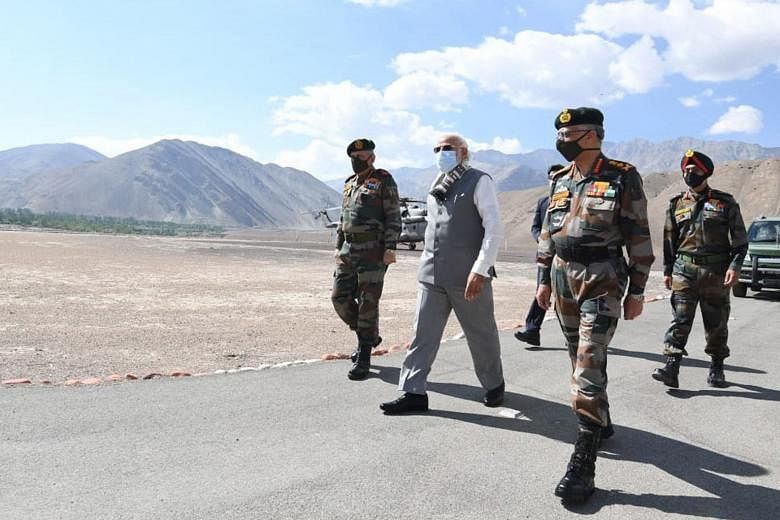China has reportedly pulled back troops from the Galwan Valley, the site of a recent violent clash between Indian and Chinese soldiers, taking a first step back from a tense border stand-off.
During a bloody face-off between the two sides on June 15, 20 Indian soldiers and an unknown number of Chinese soldiers were killed.
Indian Army sources said that the People's Liberation Army (PLA) were seen removing tents and structures in the Galwan Valley even as the two sides agreed to continue the disengagement process as they keep up talks at both military and diplomatic levels.
"Disengagement with PLA has started as per the agreed terms in the Corps Commander's meeting," a source told The Straits Times.
Rearward movement of PLA vehicles was also observed from Hot Springs and Gogra in the Ladakh region, sources said.
ANI news agency said the "extent of withdrawal is varied at different locations".
The Indian side did not say how far its own troops had withdrawn.
Both countries accused the other of initiating the violent clash.
The pullback comes a day after India's National Security Adviser Ajit Doval and Chinese Minister of Foreign Affairs Wang Yi had a phone conversation on recent developments in the border areas.
A press release by India's Ministry of External Affairs said it was agreed during the call on Sunday that "it was necessary to ensure at the earliest complete disengagement of the troops along the LAC (Line of Actual Control) and de-escalation from India-China border areas for full restoration of peace and tranquillity".
The two sides also agreed that the disengagement process should be done "expeditiously" while ensuring "a phased and stepwise deescalation in the India-China border areas", and that military and diplomatic talks should continue.
The long-standing border dispute between the two countries flares up occasionally, in spite of a thriving economic relationship that saw bilateral trade hitting US$92.68 billion (S$129 billion) last year.
Still, the two-month border standoff was the worst in decades, necessitating multiple rounds of military talks and diplomatic exchanges, even at foreign minister-level.
Chinese Foreign Ministry spokesman Zhao Lijian told reporters in Beijing that the two countries had made "positive progress... to disengage frontline troops and ease the border situation".
But Indian military and foreign policy analysts greeted reports of the pullback with caution.
"The matter is far from ended. The situation is still fluid since we don't have clarity about status quo ante (as specified by India). We have to wait and get details of the pull back," said professor of Chinese studies Alka Acharya at Jawaharlal Nehru University.
This development comes as a new border row surfaces between China and Bhutan, among India's closest neighbours. China made a fresh claim over the Sakteng wildlife sanctuary in eastern Bhutan's Trashigang district.
The development is worrisome for India, as the area is near the Indian state of Arunachal Pradesh, which China claims as its own.
Analysts said the border row has left India and China with a massive trust problem.
"We are still there for the long haul. But I would say it's a beginning to disengagement. They don't want to escalate it further," said Professor B.R. Deepak of the Centre for Chinese and South East Asian Studies at Jawaharlal Nehru University.
"I think the damage is already done. Anti-China sentiments are rising high in this country. It's not going to be business as usual," he added.


